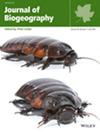Sampling bias and gaps have a direct influence on the perceived patterns of biodiversity, hence limiting our ability to make well-informed decisions about biodiversity conservation. Yet most methods either disregard or underestimate the effects of sampling bias and gaps in modelling biodiversity patterns. Our objective is to test the sensitivity of commonly used methods for modelling biodiversity dimensions (richness, endemism, and beta diversity) to sampling bias and collection gaps, and as a way to mitigate those effects we introduce a novel approach that employs the sampling effort to minimize the effects of collection bias and gaps in biodiversity models.
South America.
Here, we use controlled simulations of virtual species distribution and sampling effort to test the sensitivity to sampling bias and collection gaps by commonly used methods, that is, species distribution models (SDMs), spatial interpolation (SI), and environmental prediction (EP), for estimating species richness, endemism, and beta diversity. Our research contributes to advancing biodiversity modelling by introducing a novel approach, named uniform sampling from sampling effort (USSE), that employs the sampling effort to minimize the effects of collection bias and gaps.
EP with USSE has proven effective in accurately predicting species richness, especially in scenarios in which the sampling effort does not coincide with the biodiversity niches. It outperformed SI and SDMs. The latter performed poorly, yielding the lowest predictive score. In estimating endemism and beta diversity, all methods yielded similar results, without statistically significant differences. For estimating beta diversity, the generalized dissimilarity model proved to be a robust method, even in face of biased sampling. Controlled simulations are key to testing biodiversity methods. These tests can isolate confounding factors inherent to real-world data, enabling robust methodological assessments. Although fieldwork and curation of collections must remain indispensable, novel biodiversity methods could help overcome the limitations of sampling biases, helping expedite conservation actions much needed.


